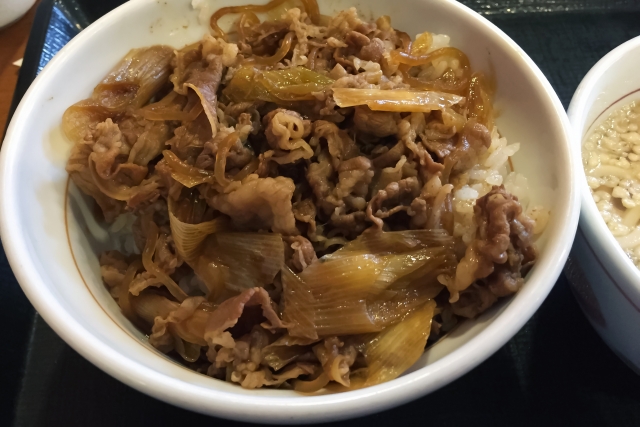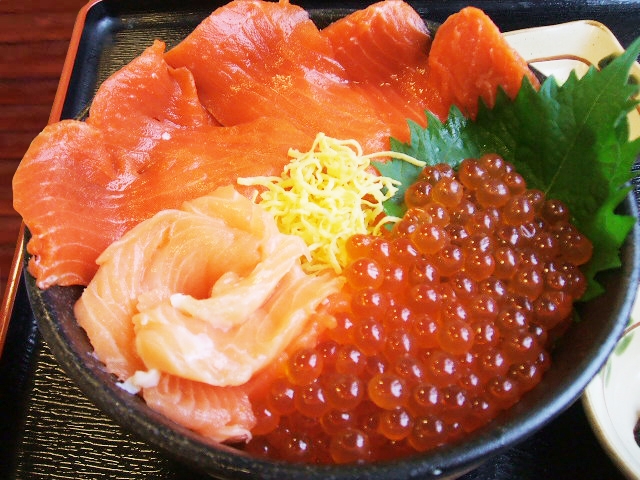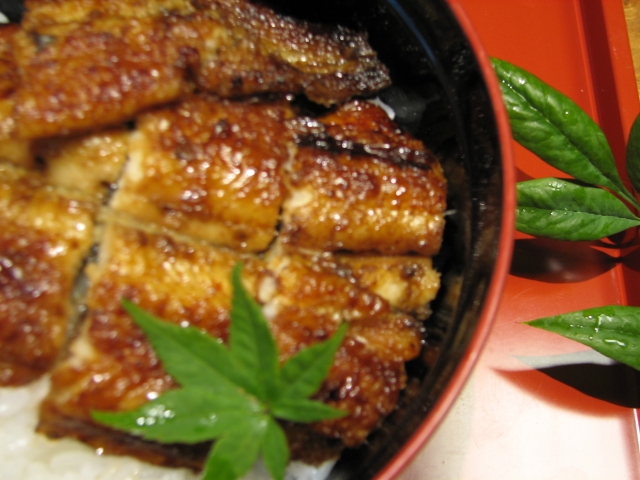Donburi – Microcosm of Japanese Cuisine in a Bowl
Traditional Japanese dining, unlike its Western counterpart, has several components. Whereas in the West each person receives a single dish, the table in Japan is abundant with a variety of small dishes. Bowls of rice and miso soup are the most basic components each diner will receive. There will also be a colorful arrangement of main and side dishes to complement the meal. The beauty of this custom is that the arrangement not only looks very appetizing, but it also allows diners to indulge in different textures and tastes.
As delicious as it may sound, cooking such a mixed variety of food is time consuming, therefore when in a hurry, quick meals are the best options. Although noodles such as soba or ramen are popular choices, it is possible to make a delicious bowl of donburi with a little bit of extra effort.
There are countless recipes of donburi. Named after the bowl it is served in, donburi is a dish that consists of rice with different toppings. A typical topping consists of fish or meat with vegetables that can be served raw, fried or simmered with plenty of broth or sauce. Sometimes shortened to simply “don”, donburi saves the hassle of cooking different dishes to go with the meal. It can be as easy as topping the leftovers from last night’s dinner on rice, which frequently makes a quick and easy lunch in Japanese households.
Below, we will look into popular traditional range of toppings.
meat options
Oyako-don
As the dish consists of chicken and eggs, its English translation is ‘a parent and a child’ bowl. However, don’t let the name of the dish put you off. Instead, think of oozy, comforting and well-seasoned omelette with chunks of chicken.
Gyu-don
Literally meaning ‘beef bowl’, gyu-don is topped with thinly sliced beef simmered with sliced onions and typically garnished with benishoga (pickled red ginger). Gyu-don is so popular that there are some nationwide chains of fast food shops specializing in it across the country. If you enjoy the taste of the slightly sweet broth sauce, we recommend you to ask for ‘tsuyudaku’- your gyu-don will come with an extra pouring of the irresistible yet delectable broth sauce.

Yakitori-don
Yakitori is originally a very popular dish of skewered chicken grilled over charcoal fire. Its donburi version is the same, except minus the skewers with rice underneath it. Just like with gyu-don, you can ask for some extra sauce, which for yakitori-don is called ‘tare’ (thickened soy sauce-based sweet sauce) to make both the toppings and the rice underneath more flavorsome.
Katsu-don
Taking part of its name from tonkatsu, this donburi topping is made of deep-fried, breadcrumb-coated pork cutlet that is then simmered in beaten eggs and dashi-based sauce. We recommend sprinkling some shichimi (mixture of seven Japanese spices) for a punch of tangy sensation.


Seafood options
Kaisen-don
This is, in our opinion, the most extravagant of all donburi meals. Also known as sashimi rice bowl in the English speaking world, kaisen-don is a vibrant combination of freshly sliced seasonal sashimi (raw fish), raw uni (sea urchin) and ikura (salmon roe). There are local fish markets across the country where you can purchase a plain bowl of rice and create your own kaisen-don by buying toppings of your choice at fish stalls. Now wouldn’t that be a heavenly experience for seafood lovers?
There are also other variations of kaisen-don. Tekka-don consists of only maguro (tuna sashimi), while nama shirasu-don consists of freshly caught, raw whitebait, the latter of which is a rare dish available only in spring and autumn.
Una-don
The first una-don was invented back in the 1800s. Being on the higher end of the donburi clan, una-don comes with grilled eel fillets that are glazed in a soy sauce-based sweet and savory sauce. If you have ever tried teriyaki chicken, you will most likely notice the similarity in taste.
Ten-don
Abbreviated from tempura and donburi, ten-don is served with succulent tempura on top of steamed rice that is generously sprinkled with ten-tsuyu broth. From upmarket to casual chain stores, a typical ten-don is served with freshly deep-fried shrimp and vegetable tempuras.
Fukagawa-don
This donburi comes from Fukagawa region, thus bearing the name of its place of origin. It is said that during the Edo period, Fukagawa River was full of clams, which fishermen used to make nutritious meals while on board. Being quick, tasty and nourishing, this donburi features juicy clams that are simmered and laid on a bed of rice.
The one-bowl, donburi culture is extremely popular in the Japanese society. Blending deliciousness, nutrition and quick-to-make aspects marries well with the hectic life style the Japanese have been leading from the olden days.
